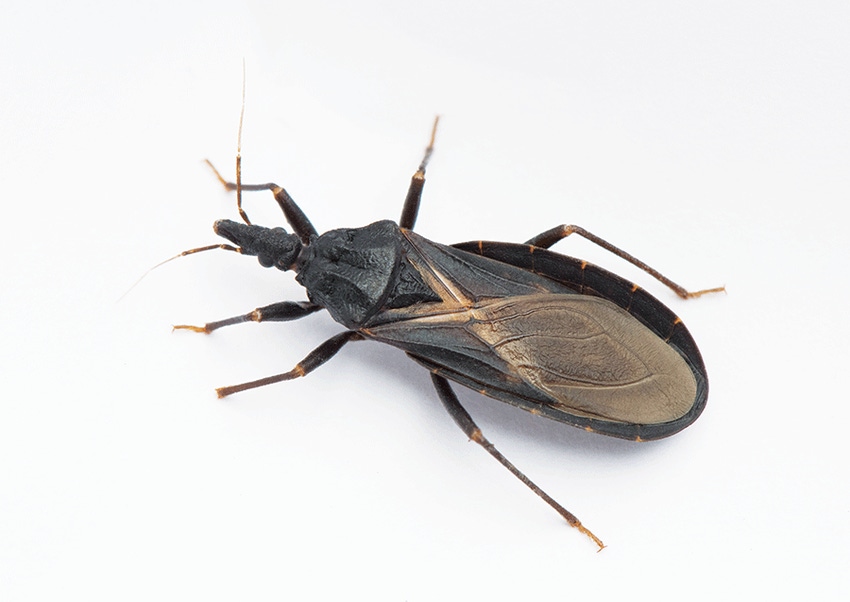
So-called assassin bugs are often the heroes of an orchard, preying on other insects and keeping pest pressures under control. But as many a grower will tell you, when they bite, it often stings — a lot.
Ben Faber, University of California Cooperative Extension advisor based at Ventura, tells of the call he got recently from a grower asking about an insect that had bit him when he picked it up. The bite had caused fearsome pain and some swelling.
But, Faber says in the UC Tree Fruit, Citrus, Avocado, and Nuts blog, such bites usually don’t require medical attention unless the recipient has an anaphylactic reaction, such as generalized swelling, itching, hives or difficulty breathing.
WHAT ARE ASSASSINS?
Assassin bugs from the family Reduviidae, the order Hemiptera, and the suborder Heteroptera fall into some 7,000 species worldwide, of which about 50 are native to California. All Hemiptera have tubular mouthparts with stylets that help them pierce tissue and, in some cases, help the insect feed on blood. For example, so-called “kissing bugs” are so named because they often bite people on the face near the mouth.
Many species of assassin bugs sit on flowers or leaves, where they stalk or ambush their prey, Faber notes. Others like to hide in micro-habitats, such as underneath the bark of trees, where they feed on certain beetle and fly larvae that live there.
Of the species native to California, a majority are found in the southern part of the state, although you can find different species everywhere from the low deserts to fairly high elevations in the Sierras.
A common species in the Golden State is the widely-distributed leafhopper assassin bug, which is frequently found even in some back yards. Leafhopper assassin bugs are beneficial, Faber says, in that they eat pests that can be a nuisance to crops and other plants.
KISSING BUGS
There’s no need to panic when you see an assassin bug, although he cautions it’s best not to touch them because they can inflict rather painful bites.
The bug that presents perhaps the most danger is the kissing bug; its bite is painless, but can cause allergic reaction, as well as Chagas disease. If untreated, this disease can live in the body for years, and can eventually lead to heart failure or other internal problems, according to the World Health Organization. Medication can cure it if given early enough, or it can delay or prevent end-stage symptoms.
The protozoan that causes Chagas disease, Trypanosoma cruzi, isn’t transmitted during the bite, Faber notes. Rather, when the bite gets itchy and the person scratches, feces left by the kissing bug get into the wound and the bloodstream. Typically, California’s kissing bugs blood-feed on woodrats, but will try to feed on other vertebrates, including humans and dogs.
TREAT THE BITE
People who are bitten should wash and apply antiseptic to the site of the bite, and take ibuprofen or another analgesic to reduce the pain, he says. Caladryl or topical corticosteroids may help reduce swelling or itching at the site of the bite.
To read Faber’s full blog post, go to https://bit.ly/2CZp1rO
About the Author(s)
You May Also Like






